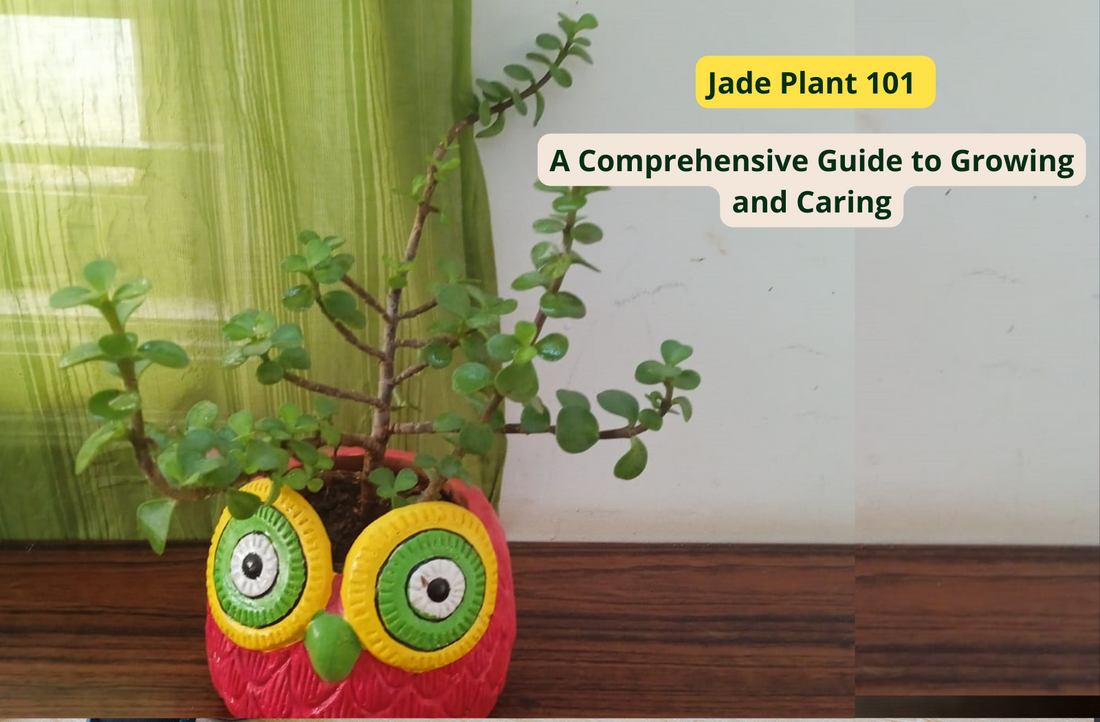Jade plants (Crassula ovata), also known as the money plant or lucky plant, are beloved for their succulent leaves and resilience. These easy-to-care-for plants make excellent additions to both indoor and outdoor gardens. In this comprehensive guide, we'll cover the basics of growing and caring for Jade plants, ensuring they thrive and bring good fortune to your living space.
1. Understanding the Jade Plant:
a. Origin and Features:
Jade plants are native to South Africa and belong to the Crassulaceae family. They are characterized by thick, fleshy leaves and a tree-like growth habit, making them popular choices for bonsai enthusiasts.
b. Symbolism:
Jade plants are often associated with prosperity and good luck, making them common gifts for new businesses and homes. According to Feng Shui principles, placing a Jade plant by the entrance is believed to invite positive energy and wealth.
2. Sunlight Requirements:
a. Indoor Placement:
Jade plants thrive in bright, indirect light. Place them near a south or west-facing window where they can receive at least four hours of sunlight per day.
b. Outdoor Sun Exposure:
When grown outdoors, Jade plants prefer partial shade, especially in regions with intense sunlight. Morning sunlight is ideal, and protection from harsh afternoon sun is recommended.

3. Watering Tips:
a. Moderation is Key:
Jade plants are succulents, and like most succulents, they prefer slightly drier conditions. Allow the top inch of soil to dry out before watering. Overwatering can lead to root rot.
b. Watering Frequency:
During the growing season (spring and summer), water your Jade plant every 2-3 weeks. In the dormant season (fall and winter), reduce watering to once a month.
c. Watering Technique:
Use the soak-and-dry method. Water the plant thoroughly, allowing water to drain from the bottom. Discard any excess water collected in the saucer to prevent waterlogged soil.
4. Soil Requirements:
a. Well-Draining Mix:
Jade plants prefer well-draining soil to prevent root rot. Use a cactus or succulent potting mix or amend regular potting soil with perlite or sand to improve drainage.
b. Container Choice:
Ensure the pot or container has drainage holes to facilitate proper drainage. This prevents water from accumulating at the bottom, reducing the risk of overwatering.
5. Temperature and Humidity:
a. Temperature Range:
Jade plants thrive in average room temperatures between 65-75°F (18-24°C). They can tolerate slightly cooler temperatures during the dormant season.
b. Humidity Levels:
Jade plants are adaptable to low humidity levels, making them suitable for indoor environments. However, they may benefit from occasional misting in dry climates.
6. Fertilizing Routine:
a. Balanced Fertilizer:
During the growing season (spring and summer), feed your Jade plant with a balanced liquid fertilizer diluted to half strength. Apply every 2-4 weeks.
b. Avoid Over-Fertilizing:
Too much fertilizer can lead to leggy growth. Reduce or cease fertilization during the dormant season (autumn and winter).
7. Pruning and Shaping:
a. Encourage Compact Growth:
To maintain a bushy and compact appearance, prune your Jade plant by pinching or trimming back leggy growth. This can be done during the growing season.
b. Remove Dead or Yellowing Leaves:
Regularly remove dead or yellowing leaves to encourage new growth and maintain the plant's aesthetic appeal.
8. Propagation Techniques:
a. Leaf Cuttings:
Jade plants can be easily propagated from leaf cuttings. Allow cuttings to callus for a day or two before planting them in well-draining soil.
b. Offshoots or Pups:
Jade plants produce offshoots, known as pups. Gently separate these pups from the main plant and transplant them into their own containers.
9. Pest Control:
a. Common Pests:
Jade plants are relatively resistant to pests, but watch for mealybugs and spider mites. Treat infestations promptly with insecticidal soap or neem oil.
b. Inspect Regularly:
Regularly inspect the leaves and stems for signs of pests or disease. Isolate affected plants to prevent the spread of issues.
10. Repotting Guidelines:
a. Frequency:
Repot your Jade plant every 2-3 years or when it outgrows its current container.
b. Choose the Right Time:
Spring is the best time to repot Jade plants, allowing them to recover and establish new roots during the growing season.
c. Upgrading Container Size:
When repotting, choose a container that is 1-2 inches larger in diameter than the current one. Ensure it has drainage holes.
Growing and caring for Jade plants is a rewarding and straightforward process, making them perfect for both beginners and experienced plant enthusiasts. By providing the right conditions—adequate sunlight, proper watering, well-draining soil, and occasional fertilization—you can enjoy the beauty of these resilient succulents. Whether adorning your indoor space with a single Jade.
Next step
Gardener services
Landscaping services
Online nursery
Organic pesticides and fertilizers
Extra reading
Easy to maintain indoor plants to improve quality of air
12 months flowering plants in India
Happy Gardening!
Dr. Vandana K.

